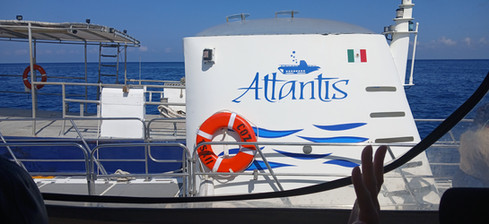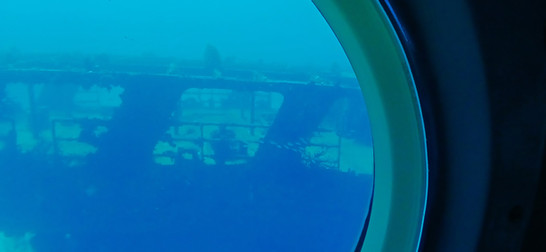Cozumel, Mexico
- Julie-Anne Justus
- Aug 29, 2024
- 4 min read
Cozumel is a small island (there's a theme here) off the Yucatán peninsula in Mexico. It's a tourist destination. The Caribbean Sea is blue, warm, clear — and there's the Mesoamerican Barrier Reef, as I've mentioned before. Cozumel is yet another great place for diving and snorkelling.

Cozumel does have quite an interesting history. It might be popular with tourists now, but in Mayan times, it was a sacred island devoted to Ixchel, the Maya Moon Goddess of fertility. All Mayan women were required to travel to the island at least once to worship Ixchel, to ask her for fertility and for a happy motherhood.
Perhaps that's why Cozumel had a healthy, quite large population of 10,000 people by the 1500s, before the Spanish explorers arrived. By 1570, after smallpox had arrived with the Spanish, there were about 400 people left. Then came the pirates. Inhabitants were evacuated to the mainland and by 1700, hardly anyone lived on Cozumel.
Which may (or may not) be why Abraham Lincoln wanted to buy Cozumel in 1861 in order to relocate freed American slaves offshore. The Mexican president said 'En absoluto! No, nunco!' or words to that effect, and Lincoln had to look elsewhere. (An island off Haiti, actually.)
But back to today. Beach clubs abound, and it's an easy choice to check into one for the day ...
... but no, we decided to try something new. We're going to see the reef from a submarine.
Atlantis Submarines is a Canadian passenger submarine company that operates 12 submarines around the Caribbean and in Hawaii. About 12 million tourists have been on these subs.
So what could go wrong? I know you're all thinking about (I was too) that submarine that recently imploded and disappeared in the deep blue. But logic says that (a) this one is only 100 feet deep and (b) everyone knows where it is.
Anyway, how often do we have an opportunity to go in a sub?
We are taken out to the submarine by a shuttle boat. I'm sitting next to a charming young woman with a strong Russian accent. We get talking. She's been living in Seattle for about five years. She tells me there are a lot of Russians in Seattle. Ah, the war? I say. Yes, she says, and lots of Ukrainians too! (Just in case I thought that only Russians were fleeing the situation.)
The hatch is open, so we transfer from the boat to the submarine and descend backwards down a steep ladder. The submarine accommodates 48 passengers, and although we're sitting very close to one another on either side, it doesn't feel cramped or uncomfortable. We don't feel like tiny fish in a can. And there's no sense of the ceiling pressing down on us ...
Photos courtesy of my Russian acquaintance. Did you notice the strip of colours (red, orange, yellow, green, blue) behind our heads?

As the submarine submerged to the strains off 'Yellow Submarine' and we went deeper, the light around us became blue. The water absorbs the low energy light waves first: red, then orange and yellow. What's left are the purple and blue light waves.
Those red, orange and yellow colours on the strip went dark. I know this is simple physics but it's interesting to see it happen.
The water is clear enough for the reef to be visible, but everything appears blue. Bright colours that we see when snorkelling in shallow water — red/orange/yellow — are no longer visible. There's just blue. Scuba divers notice this happening even at 30 feet, so by 100 feet, it's very obvious.
The sub descends to 100 feet (31 metres) — oh okay, we reached 104 feet — and the trip underwater lasts for one hour.

Note this is all natural light. There is no artificial illumination in or outside the submarine.
On the other side of this reef is an ocean trench that is 2,000 feet deep. We wouldn't want to get lost down there!
The sub follows the reef for a while, then we turn to view a shipwreck — the Felipe Xicotencatl. No, not a Titanic situation. This is a planned shipwreck. Originally built in 1944 as a US Navy minesweeper, the ship was donated to the Mexican navy in 1962 and used as an anti-drug patrol boat as well as a transport and training ship. In 1999 it was intentionally sunk to form an artificial reef. In case of hurricanes, the wreck is chained to the bottom of the sea so that it doesn't drag across the coral reef.
One of the reasons it was sunk was to alleviate some of the tourist (diver) pressure on the natural reef. Apparently the shipwreck is now so popular with divers that they choose to dive the wreck rather than the reef.
The popularity of the reef around Cozumel, and the easy access to it, has led to the health of the reef declining. A few years ago the Marine Park of Cozumel began to close reefs periodically for rehabilitation. A different reef is closed to the public every few months and apparently this is improving the reef health significantly. Moral: Take people out of the environment and the environment improves.
And then it was time to surface, and up we went, to the sound of 'Octopus's Garden' and in a stream of air bubbles.

Well, that was fun. We are now certified Atlantis submariners.


Back to shore for a bit of shopping ...
... and then back to the ship. These enterprising gentlemen were ferrying exhausted/lazy passengers along the pier back to the ship, while there was always a busker at every port.
Arriba, Cozumel! It's been wonderfully ... blue.
























































































Comentários